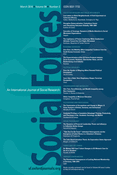-
Views
-
Cite
Cite
Tammy L. Anderson, Meth Mania: A History of Methamphetamine By Nicholas L. Parsons Lynne Rienner Publishers. 2013. 242 pages. $58.50 hardback, Social Forces, Volume 94, Issue 3, March 2016, Page e67, https://doi.org/10.1093/sf/sou040
Close - Share Icon Share
Extract
In the early 21st century, we have learned that the nation's leading drug problems stem not from substances produced in foreign lands or distributed solely by criminal gangs and organizations. Instead, they arise from drugs manufactured by the pharmaceutical industry and administered by some of our most respected citizens (doctors and pharmacists). Nick Parsons's book Meth Mania: A History of Methamphetamine illustrates this new portrait of American drug abuse in a “crystal” clear fashion. Parsons's book seeks to describe the forces at work in shaping the evolution of stimulants over time and how amphetamine-related problems have been depicted to and influential on the American public. For example, Desoxyn is a Schedule ll substance used legally to treat ADHD and obesity and illegally as “meth” to give users a risky recreational high. Parsons reminds us that the diversion of Desoxyn from the legitimate medical field to the illegal crystal meth market and subculture today—portrayed so vividly in “Faces of Meth” (www.facesofmeth.us) or in AMC's Breaking Bad—isn't the first time a prescribed amphetamine caused an illegal high of “epidemic” proportions. In fact, amphetamine worries commanded our attention at least two other times in US history—the speed freaks and outlaw motorcycle gangs of the late 1960s and early 1970s and the “ice” panic of 1989 and 1990—yet concern about them never reached a full-blown panic.



